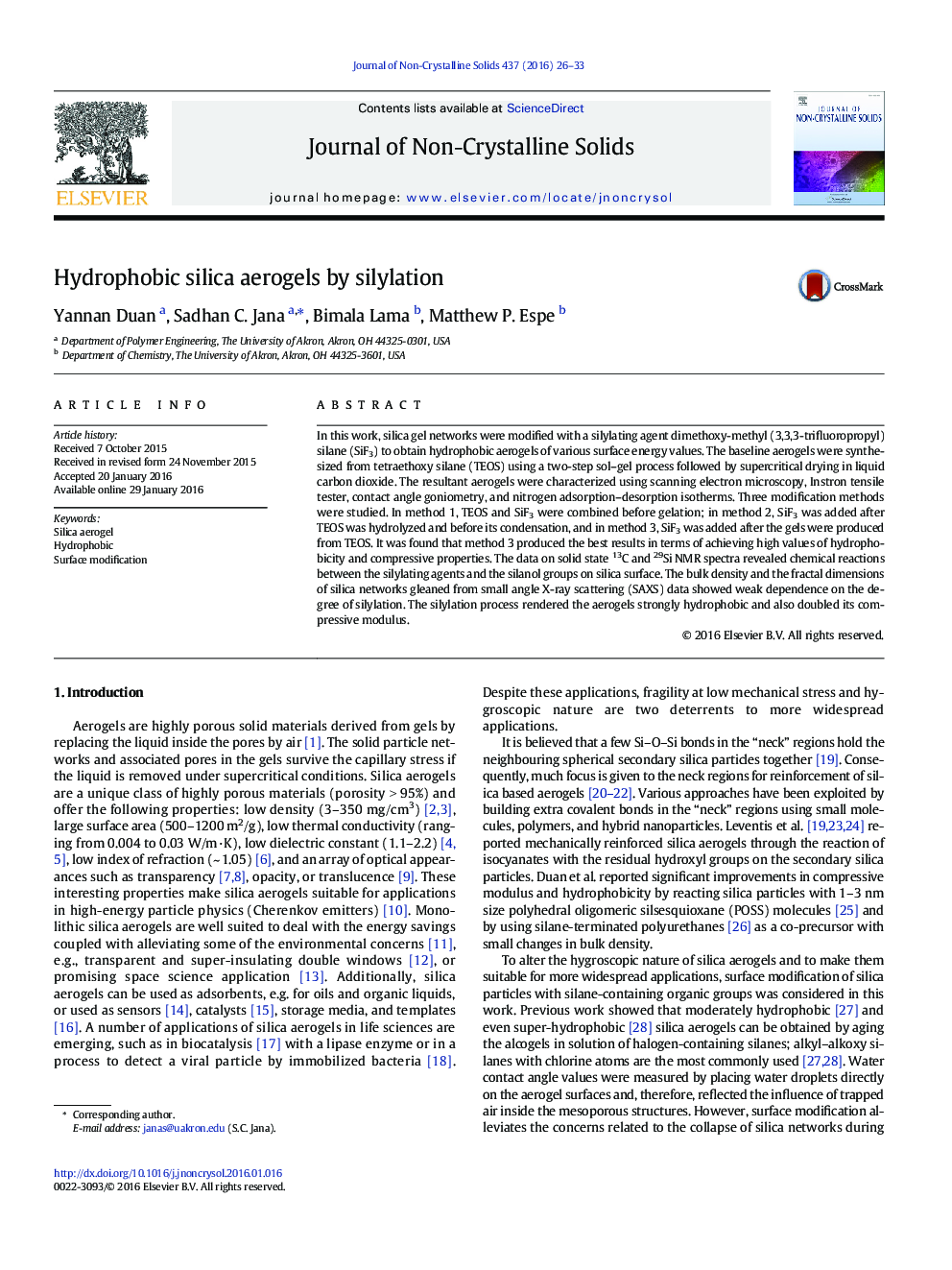| Article ID | Journal | Published Year | Pages | File Type |
|---|---|---|---|---|
| 1480348 | Journal of Non-Crystalline Solids | 2016 | 8 Pages |
•A unique silylation process rendered the aerogels strongly hydrophobic.•Post-gelation silylation produced the best results — compressive modulus doubled.•Bulk density and fractal dimensions weakly dependent on the degree of silylation•A monolayer coating significantly increased the surface energy.•Some aerogels were superhydrophobic.
In this work, silica gel networks were modified with a silylating agent dimethoxy-methyl (3,3,3-trifluoropropyl) silane (SiF3) to obtain hydrophobic aerogels of various surface energy values. The baseline aerogels were synthesized from tetraethoxy silane (TEOS) using a two-step sol–gel process followed by supercritical drying in liquid carbon dioxide. The resultant aerogels were characterized using scanning electron microscopy, Instron tensile tester, contact angle goniometry, and nitrogen adsorption–desorption isotherms. Three modification methods were studied. In method 1, TEOS and SiF3 were combined before gelation; in method 2, SiF3 was added after TEOS was hydrolyzed and before its condensation, and in method 3, SiF3 was added after the gels were produced from TEOS. It was found that method 3 produced the best results in terms of achieving high values of hydrophobicity and compressive properties. The data on solid state 13C and 29Si NMR spectra revealed chemical reactions between the silylating agents and the silanol groups on silica surface. The bulk density and the fractal dimensions of silica networks gleaned from small angle X-ray scattering (SAXS) data showed weak dependence on the degree of silylation. The silylation process rendered the aerogels strongly hydrophobic and also doubled its compressive modulus.
